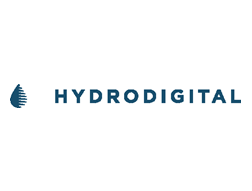How might we regenerate our sewer network into intelligent, adaptive systems that not only restore infrastructure but transform how utilities operate & thrive?
In this sprint HydroDigital and Schneider Electric are combining forces to unpack the real challenges and unlock solutions for deploying smart systems that renew aging infrastructure. Why? Well, all UK Water companies are facing increased scrutiny & regulatory pressure over quantifying and reducing the frequency and volume of discharges, particularly from storm overflows, into rivers, lakes, and coastal waters. With ageing infrastructure, combined sewer overflows and insufficient real-time monitoring across vast and complex wastewater networks. There is no silver bullet in this complex challenge, so the focus will be on the leveraging technology, people, processes, and governance that will be needed during AMP8 to digitally transform wastewater operations.
Regenerating our network with Smart Sewers.
As part of our Regeneration sprint, we will explore how to overcome barriers and unlock solutions for deploying smart systems that renew not just aging infrastructure, but the way utilities think and operate. By integrating in-sewer sensors, predictive digital twins, and real-time optimization, we aim to regenerate sewer networks into adaptive, resilient systems. In parallel, we seek to catalyse a shift from reactive operations and maintenance to proactive, data-driven control —restoring agility, foresight, and sustainability to both systems and mindsets.
Challenge
All UK Water & Sewerage Companies are facing increased scrutiny and regulatory pressure over the frequency and volume of discharges, particularly from storm overflows, into rivers, lakes, and coastal waters. Much of this pollution stems from ageing infrastructure, combined sewer overflows and insufficient real-time monitoring across vast and complex wastewater networks.
Some of the challenges include:
- Difficulty around physically deploying sensors in challenging locations.
- Providing power to locations where continuous sensor measurements are required (digital-twin enabled IoT devices)
- Ensuring reliable communications from remote locations
- Implementing actuators in storm tanks
- Requirement to report discharges within 60 minutes.
- Understanding how smart sewers manage risk.
- NWL adopting new ways-of-working regarding SMART Sewer
- Designing systems with only one use case in mind.
Proposal
This sprint proposes the development of a scalable, whole-life framework for smart sensor deployment & management. The goal is to address current limitations on sensor planning, delivery & lifecycle support which hinder large-scale rollouts. By the end of the sprint, we aim to co-create a scalable end-to-end blueprint for smart sensor lifecycle planning - covering deployment, maintenance, and decommissioning. A critical enabler of this vision is the convergence of IT (Information Technology) & OT (Operational Technology) – aligning data, systems, and governance across historically siloed functions. This proposal supports smarter asset strategies, compliance with environmental regulations, and futureproofing for widespread digital transformation.
Target Outcome
The outcome will include a prototype or concept model, validated with key users, that outlines the management of a smart sensor network sustainably and at scale.
Target Audience
This sprint will be of interest to asset managers, operational planners, and environmental compliance teams within UK WASCs who influence & support sensor strategy & deployment. We are looking for innovators designing next-gen, low power sensor technologies. Companies developing machine learning tools for sensor health monitoring. Specialists in deploying edge devices & robust communication networks. Start-ups offering autonomous tools to assist with large scale deployment in challenging environments.
| Registration has now closed |


